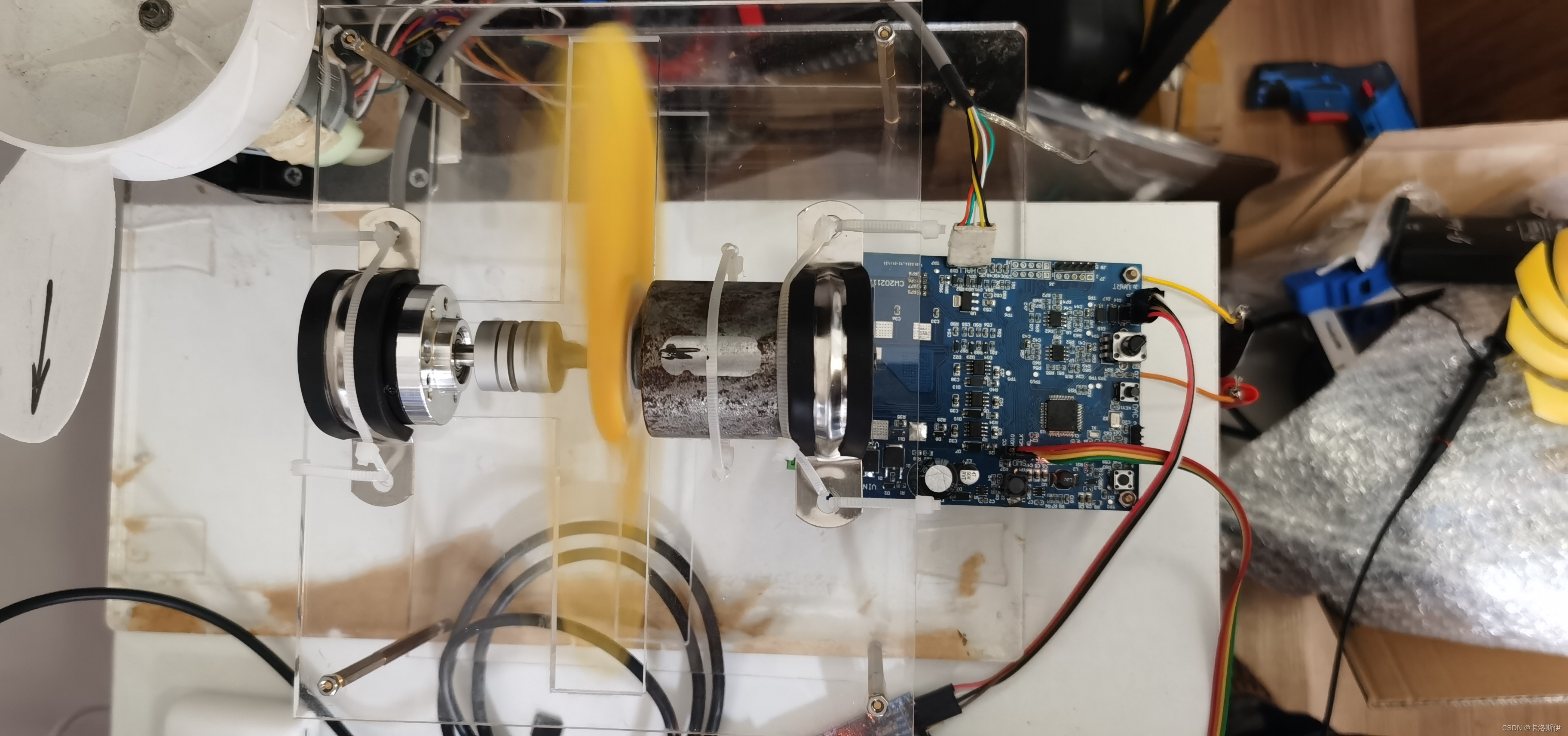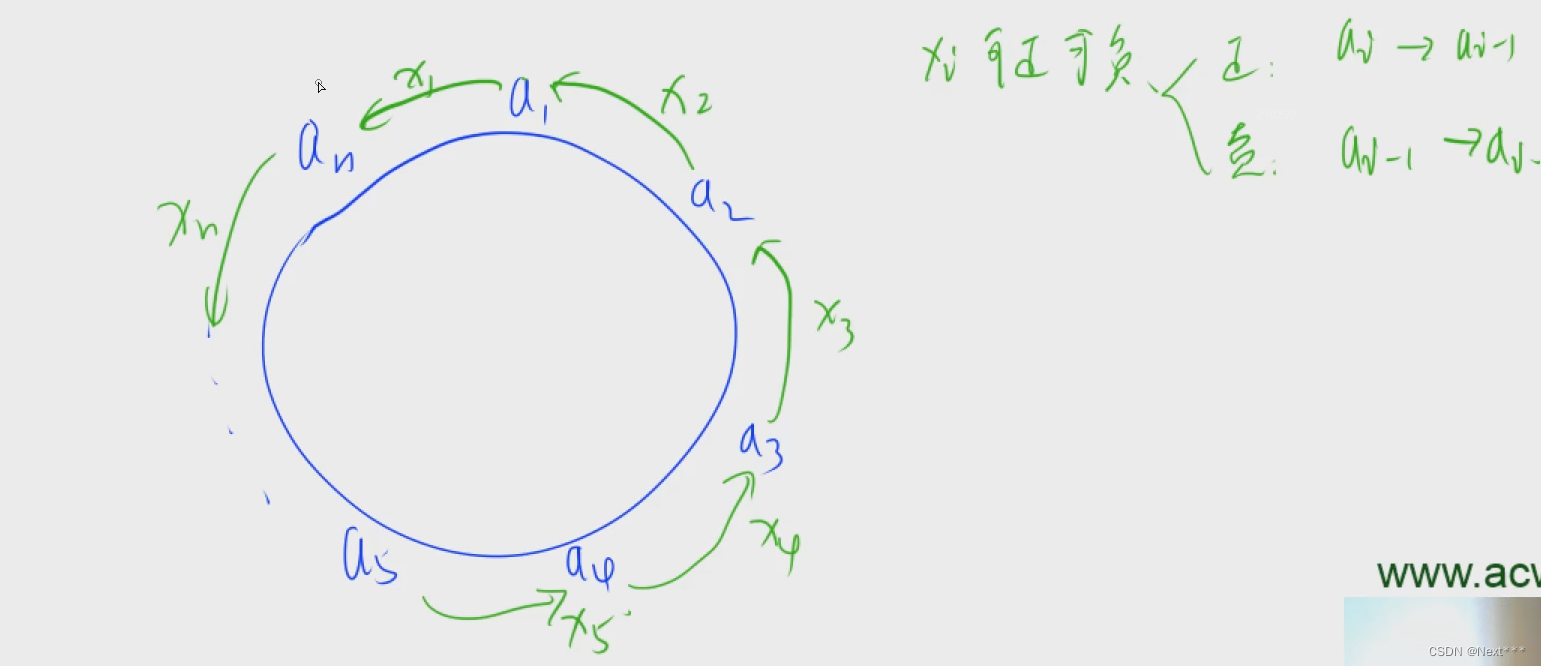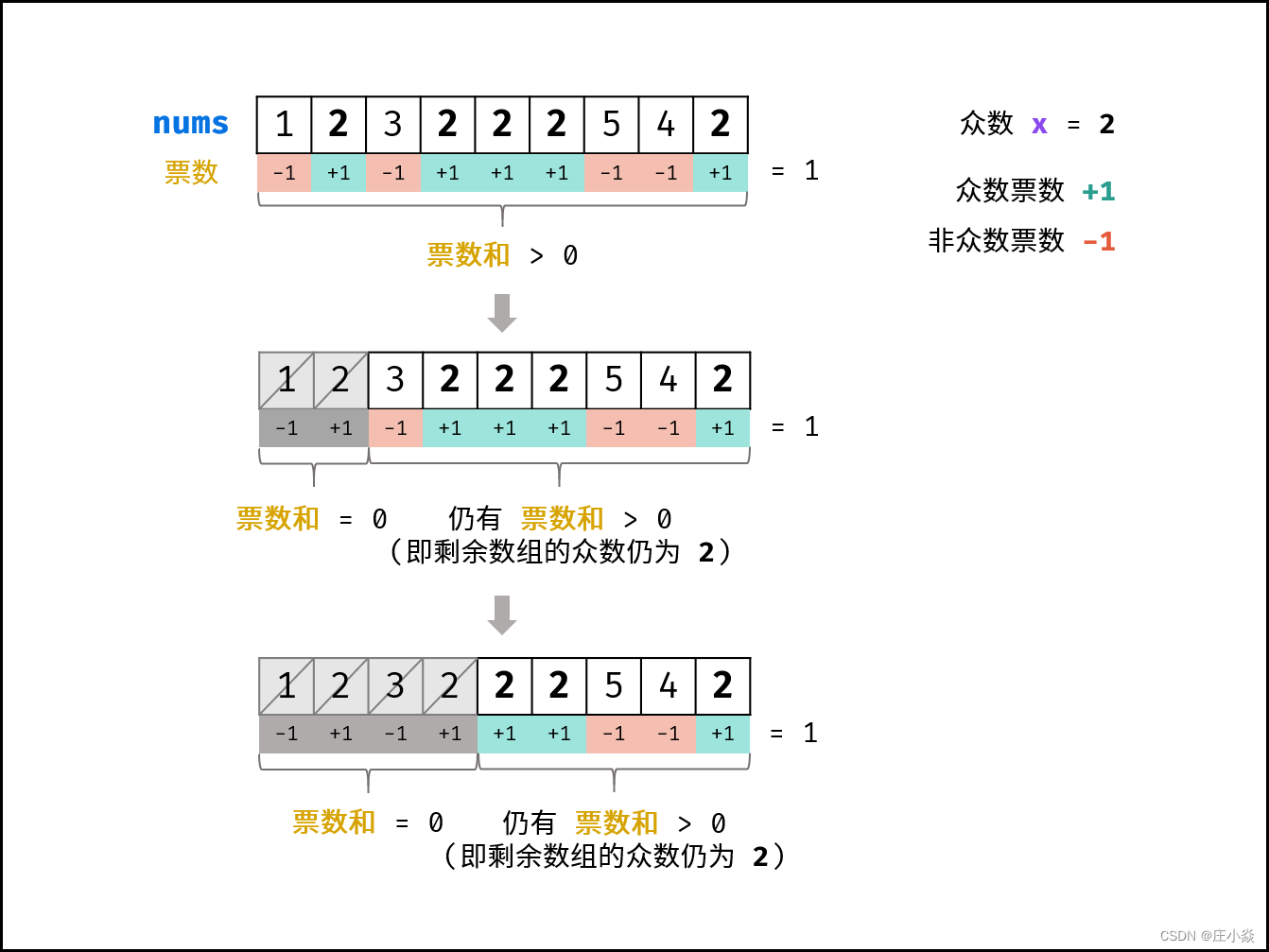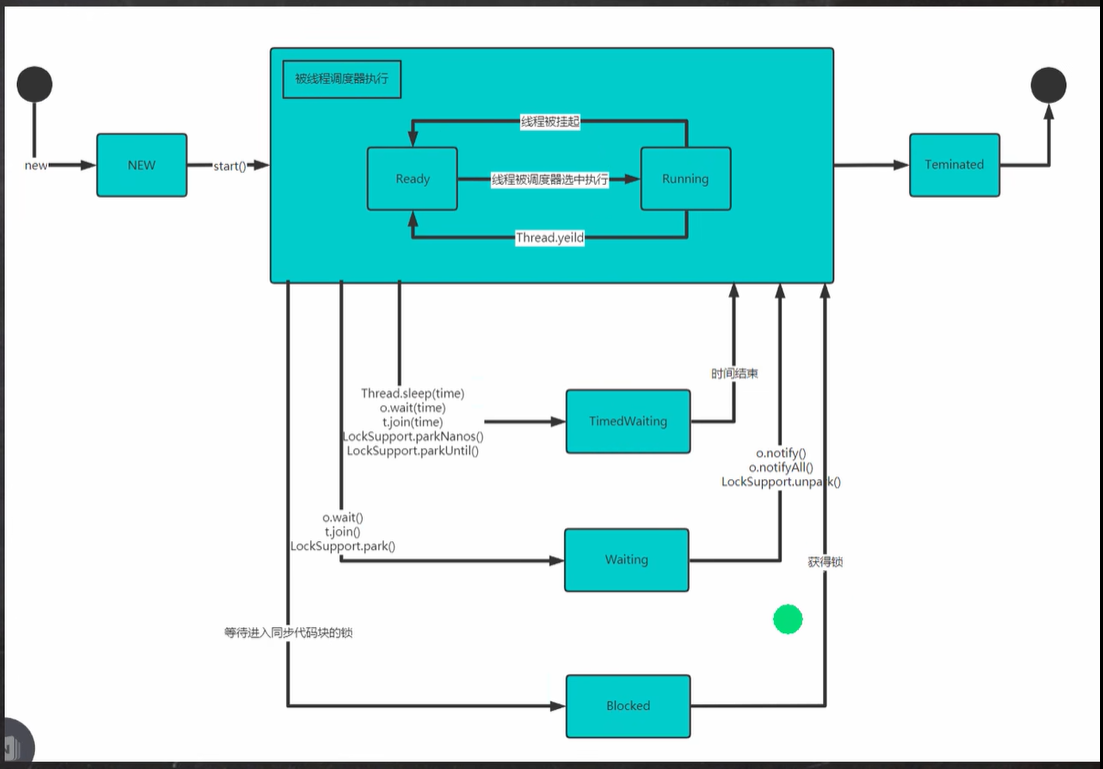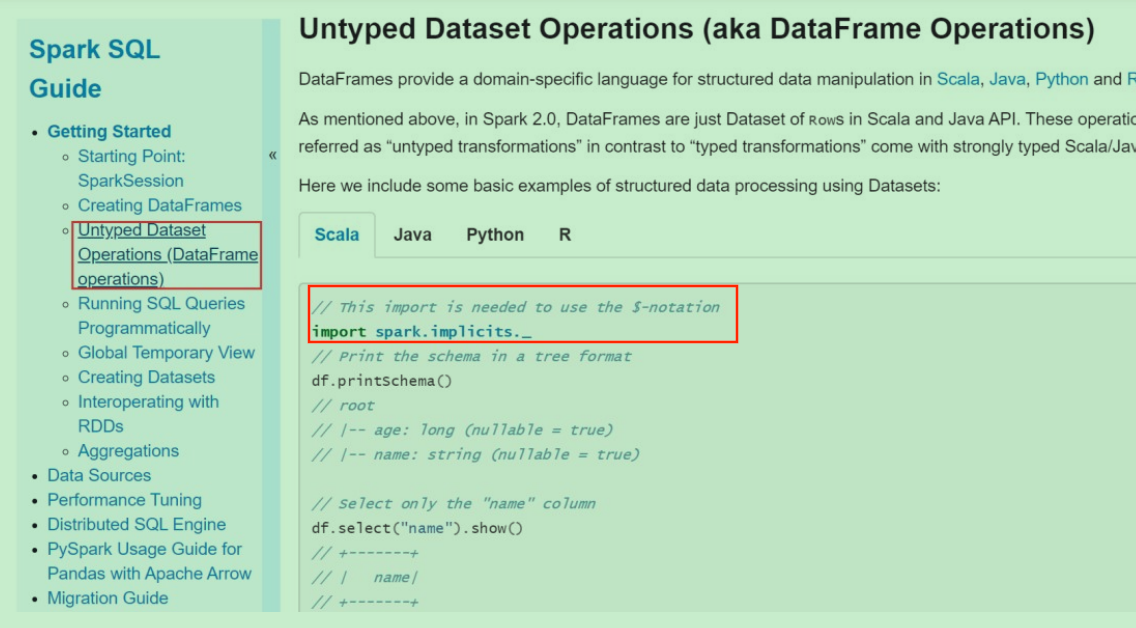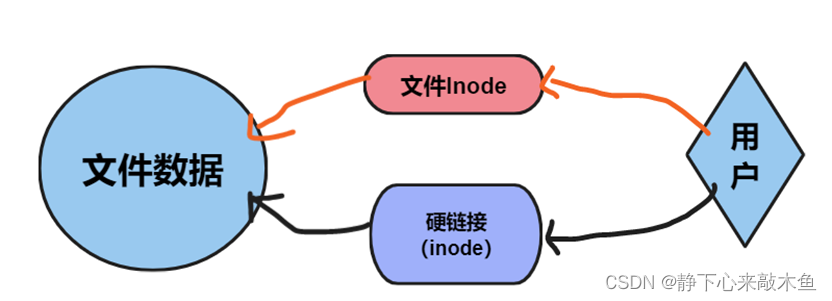队列
队列介绍
有序列表,可以用数组或者链表实现。遵循先进先出原则。
数组实现队列
public class ArrayQueue {
public static void main(String[] args) {
ArrayQueue queue = new ArrayQueue(3);
// 接收用户输入
char key =' ';
Scanner sc = new Scanner(System.in);
boolean loop = true;
while (loop) {
System.out.println("s(show): 显示队列");
System.out.println("e(exit): 退出程序");
System.out.println("a(add): 添加数据进队列");
System.out.println("g(get): 从队列取出数据");
System.out.println("h(head): 队列头数据");
// 返回输入的第一个字符
key = sc.next().charAt(0);
switch (key) {
case 's':
queue.showQueue();
break;
case 'a':
System.out.println("输出一个数:");
queue.addQueue(sc.nextInt());
break;
case 'g':
try {
int res = queue.getQueue();
System.out.printf("取出的数据是:%d\n", res);
} catch (Exception e) {
System.out.printf(e.getMessage());
}
break;
case 'h':
try {
int res = queue.head();
System.out.printf("头数据是:%d\n", res);
} catch (Exception e) {
System.out.printf(e.getMessage());
}
break;
case 'e':
sc.close();
loop = false;
break;
default:
break;
}
System.out.println("程序退出~~");
}
}
// 数组的最大容量
private int maxSize;
// 队头
private int front;
// 队尾
private int rear;
// 存放数据的数组
private int[] arr;
// 初始化队列
public ArrayQueue(int maxSize) {
this.maxSize = maxSize;
this.arr = new int[this.maxSize];
// 让front 指向队列头的前一个位置(队列头数据的前一个位置)
this.front = -1;
// 让rear 指向队尾的数据(队列的最后一个数据)
this.rear = -1;
}
// 判断队列是否满
public boolean isFull() {
return rear == maxSize - 1;
}
// 判断队列是否为空
public boolean isEmpty() {
return rear == front;
}
public void addQueue(int data) {
if (isFull()) {
System.out.println("队列满,不能加数据~");
return;
}
rear++;
arr[rear] = data;
}
public int getQueue() {
if (isEmpty()) {
throw new RuntimeException("队列空,无法取出数据~");
}
front++;
return arr[front];
}
public void showQueue() {
if (isEmpty()) {
System.out.println("队列空,没有数据~");
return;
}
for (int i = 0; i < arr.length; i++) {
System.out.printf("arr[%d]=%d\n", i, arr[i]);
}
}
public int head() {
if (isEmpty()) {
throw new RuntimeException("队列空,没有头数据~");
}
return arr[front + 1];
}
}
通过该方法测试
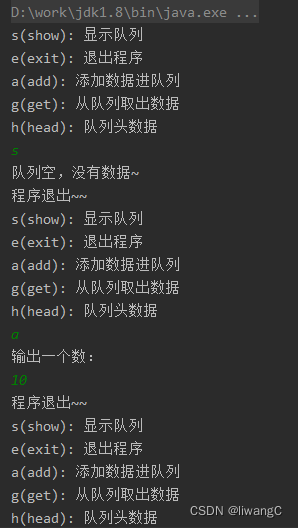
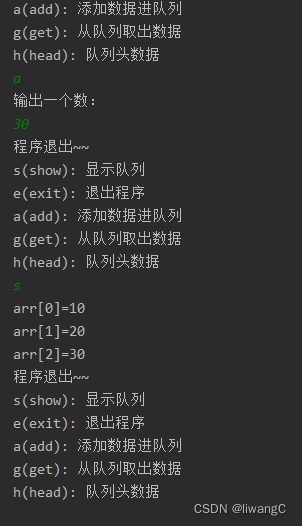
添加了:10,20,30
show:arr[0]=10,arr[1]=20,arr[2]=30
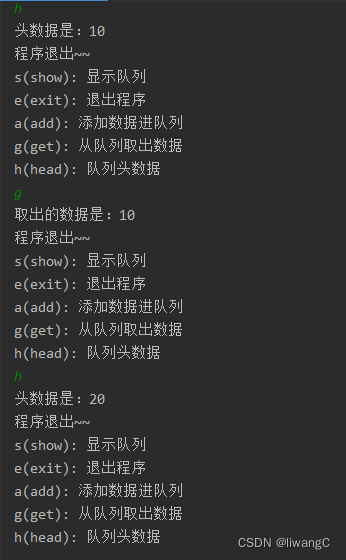
取出10后,头数据是20。这时候show一下,可以看到队列为:arr[0]=10,arr[1]=20,arr[2]=30

也就是我们通过g获取到了数据,看到队列数据还是一样。
为了可以重新使用已经出队的数据所占用的空间,考虑使用环形队列。
数组环形队列
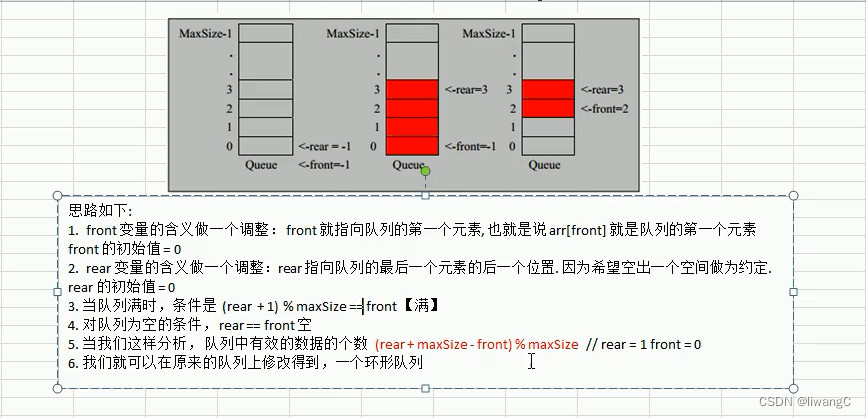
public class CircleArrayQueue {
public static void main(String[] args) {
CircleArrayQueue queue = new CircleArrayQueue(3);
// 接收用户输入
char key =' ';
Scanner sc = new Scanner(System.in);
boolean loop = true;
while (loop) {
System.out.println("s(show): 显示队列");
System.out.println("e(exit): 退出程序");
System.out.println("a(add): 添加数据进队列");
System.out.println("g(get): 从队列取出数据");
System.out.println("h(head): 队列头数据");
// 返回输入的第一个字符
key = sc.next().charAt(0);
switch (key) {
case 's':
queue.showQueue();
break;
case 'a':
System.out.println("输出一个数:");
queue.addQueue(sc.nextInt());
break;
case 'g':
try {
int res = queue.getQueue();
System.out.printf("取出的数据是:%d\n", res);
} catch (Exception e) {
System.out.printf(e.getMessage());
}
break;
case 'h':
try {
int res = queue.head();
System.out.printf("头数据是:%d\n", res);
} catch (Exception e) {
System.out.printf(e.getMessage());
}
break;
case 'e':
sc.close();
loop = false;
break;
default:
break;
}
System.out.println("程序退出~~");
}
}
// 数组的最大容量
private int maxSize;
// 让front 指向队列的第一个元素
// front = 0;
// 让rear 指向队列的最后一个元素的后一个位置,因为希望空出一个空间作为约定
// rear = 0;
private int front;
private int rear;
// 存放数据的数组
private int[] arr;
// 初始化队列
public CircleArrayQueue(int maxSize) {
this.maxSize = maxSize;
this.arr = new int[maxSize];
}
// 判断队列是否满
public boolean isFull() {
return (rear + 1) % maxSize == front;
}
// 判断队列是否为空
public boolean isEmpty() {
return rear == front;
}
// 添加数据
public void addQueue(int data) {
if (isFull()) {
System.out.println("队列满,不能加数据~");
return;
}
arr[rear] = data;
// rear 后移,因为是环形,考虑取模
rear = (rear + 1) % maxSize;
}
public int getQueue() {
if (isEmpty()) {
throw new RuntimeException("队列空,无法取出数据~");
}
// 因为front 是队列第一个元素,也会后移,考虑取模,以免越界
// 1.先保存front 指向的值到value
int value = arr[front];
// 2.front 后移,并返回value
front = (front + 1) % maxSize;
return value;
}
public void showQueue() {
if (isEmpty()) {
System.out.println("队列空,没有数据~");
return;
}
// 因为是环形队列,需要考虑从front 开始遍历,遍历队列的有效数据个数
for (int i = front; i < front + size(); i++) {
System.out.printf("arr[%d]=%d\n", i % maxSize, arr[i % maxSize]);
}
}
// 当前队列的有效数据个数
public int size() {
return (rear + maxSize - front) % maxSize;
}
public int head() {
if (isEmpty()) {
throw new RuntimeException("队列空,没有头数据~");
}
return arr[front];
}
}
测试:
添加数据10,20,30,show一下,添加40提示队列满
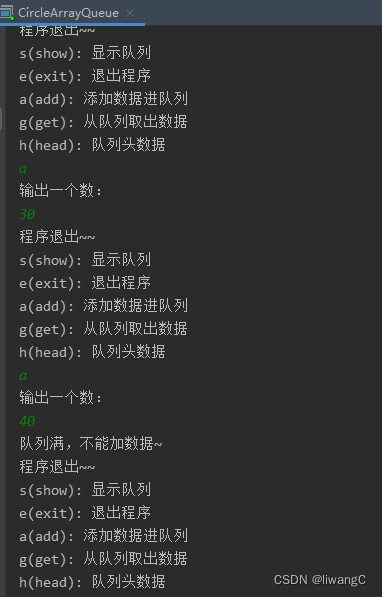
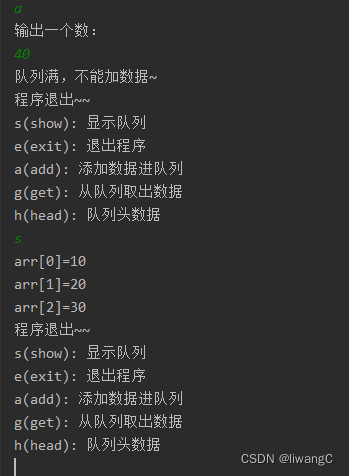
取出arr[0] 后,show一下,可以看到队列还剩两个数据
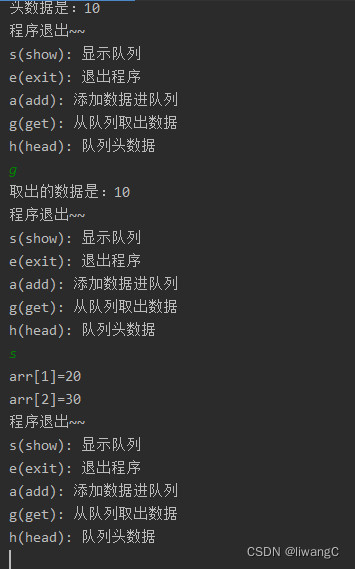
这时,又可以在arr[0] 的位置插入新数据。
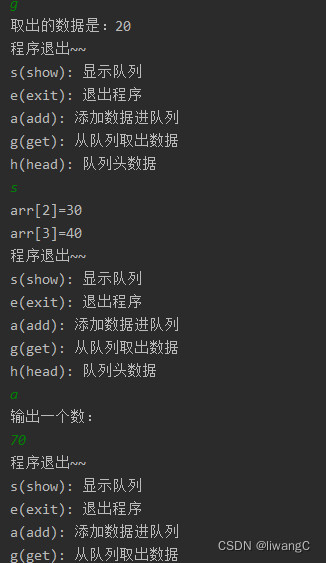
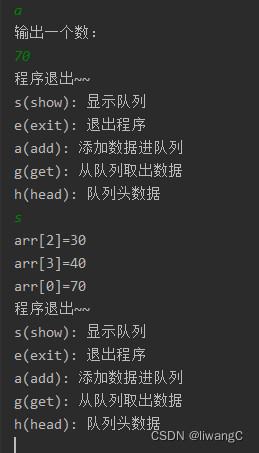
这样,就可以利用好了数组空间。
最近学习的数据结构与算法主要都是根据尚硅谷的学习:
https://www.bilibili.com/video/BV1E4411H73v/?p=18&vd_source=8e23c01ff3b88e176530ca2e0f4f18fe
可以看看我的个人博客:
网站:https://www.fuzm.wang / https://liwangc.gitee.io
—————————————————————————
作为初学者,很多知识都没有掌握,见谅,如有错误请指出,以期进步,感谢!。后续有新的学习,继续补充上来。
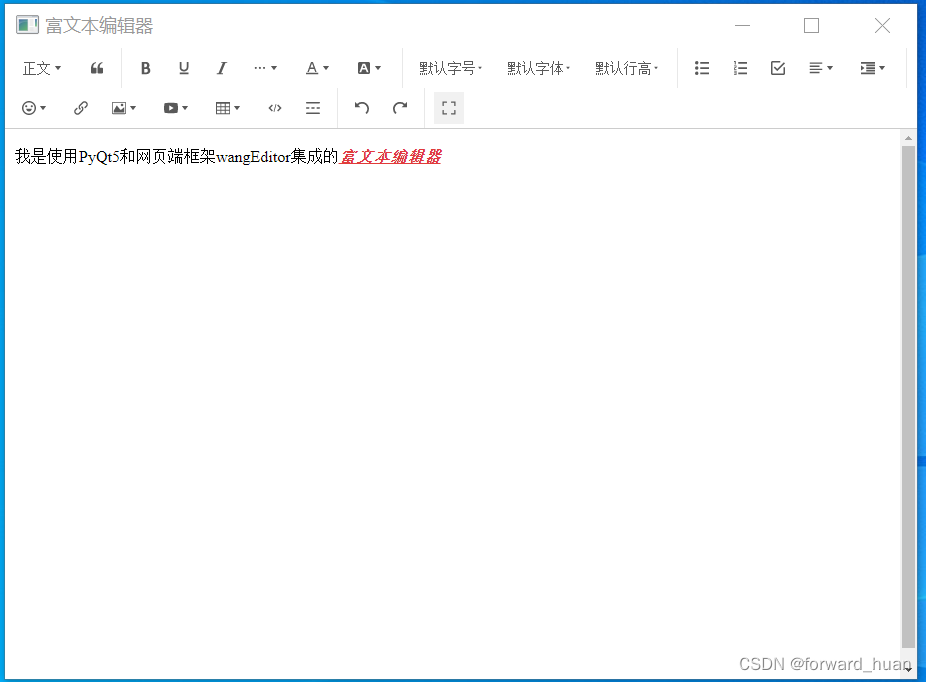
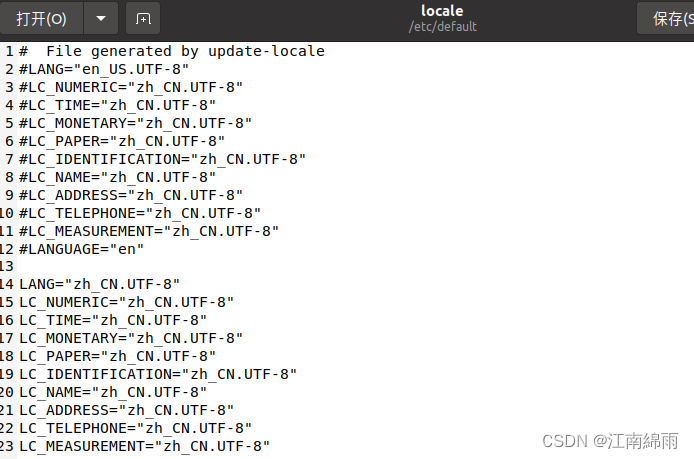
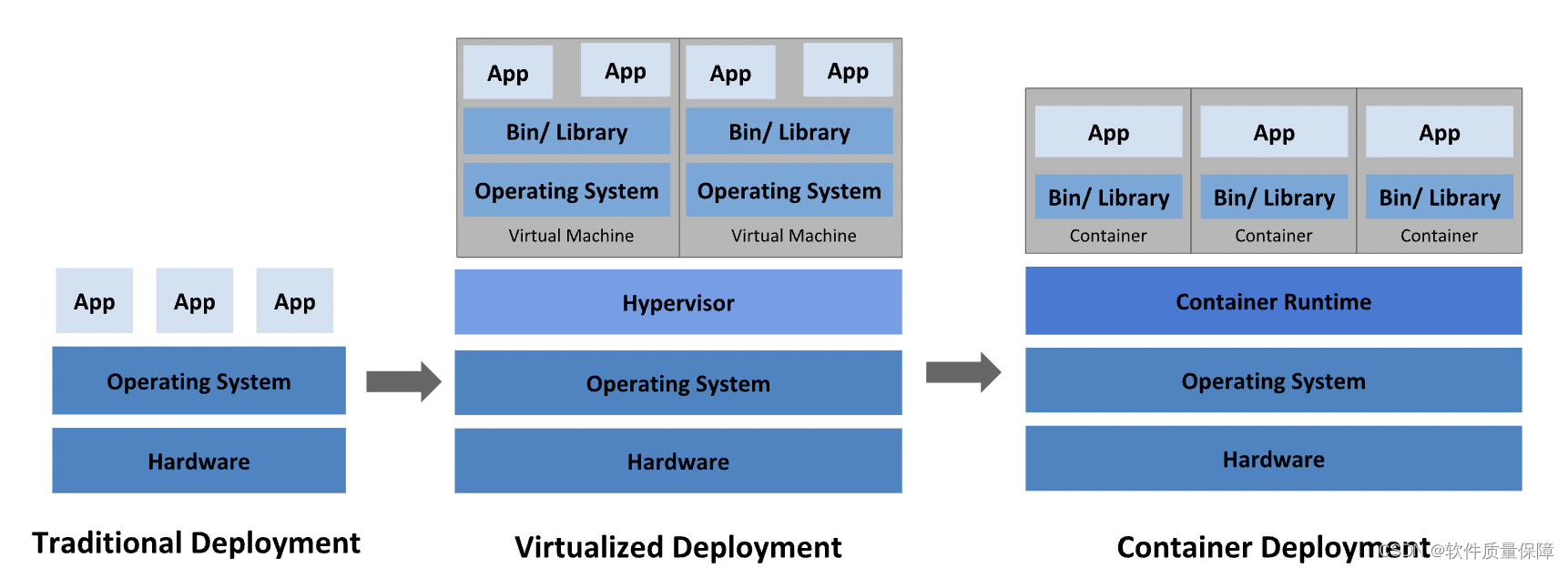

![[教你传话,表白,写信]](https://img-blog.csdnimg.cn/e8df5f4eea774962a864642c05128b08.jpeg)
